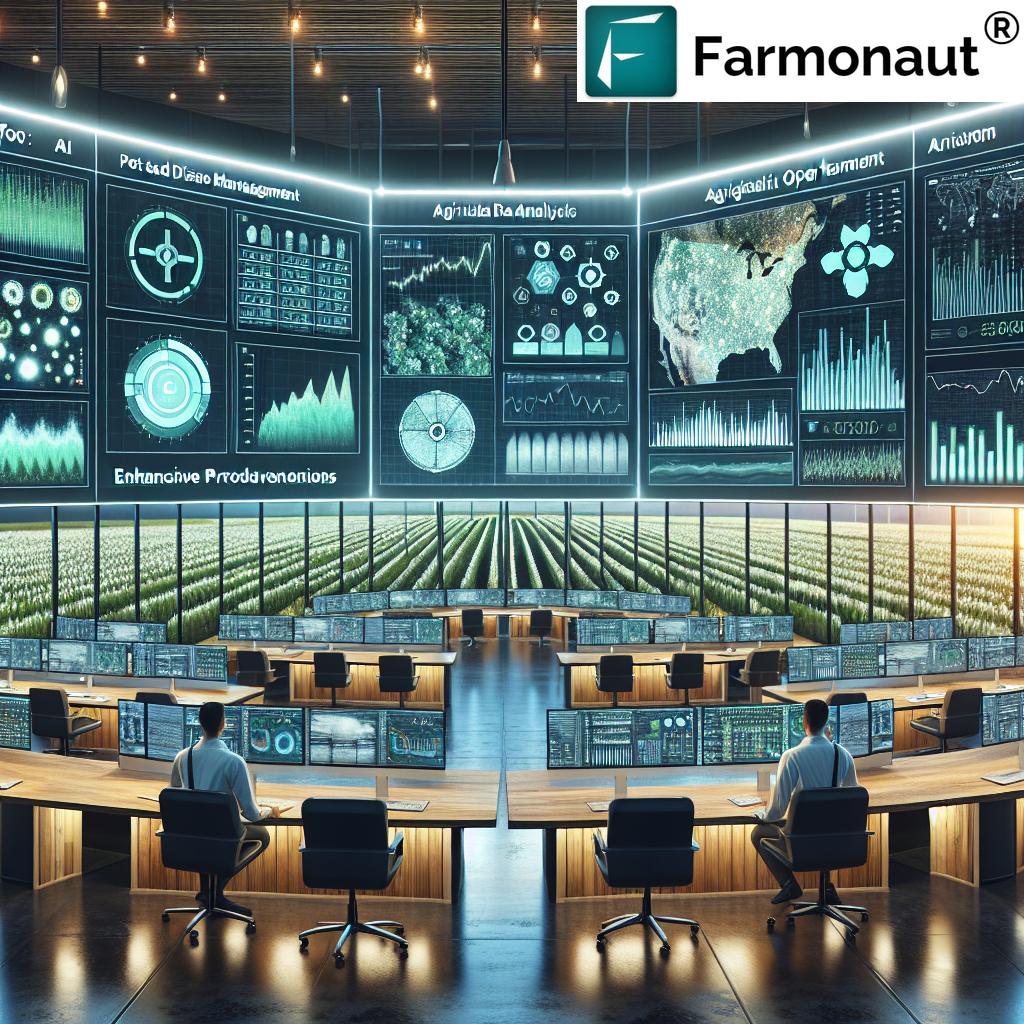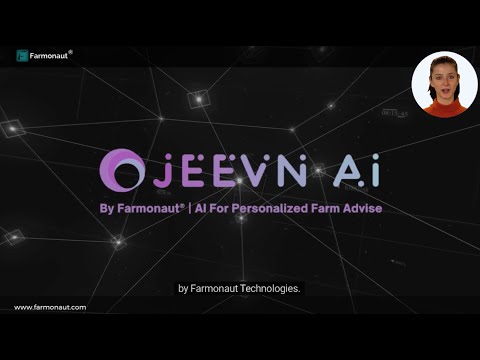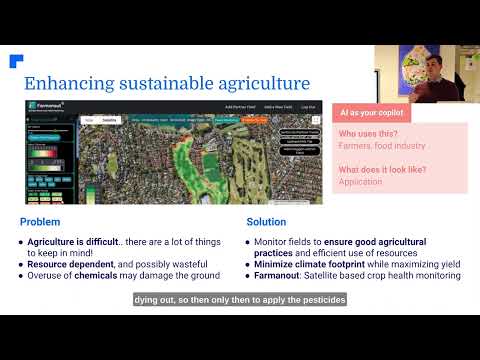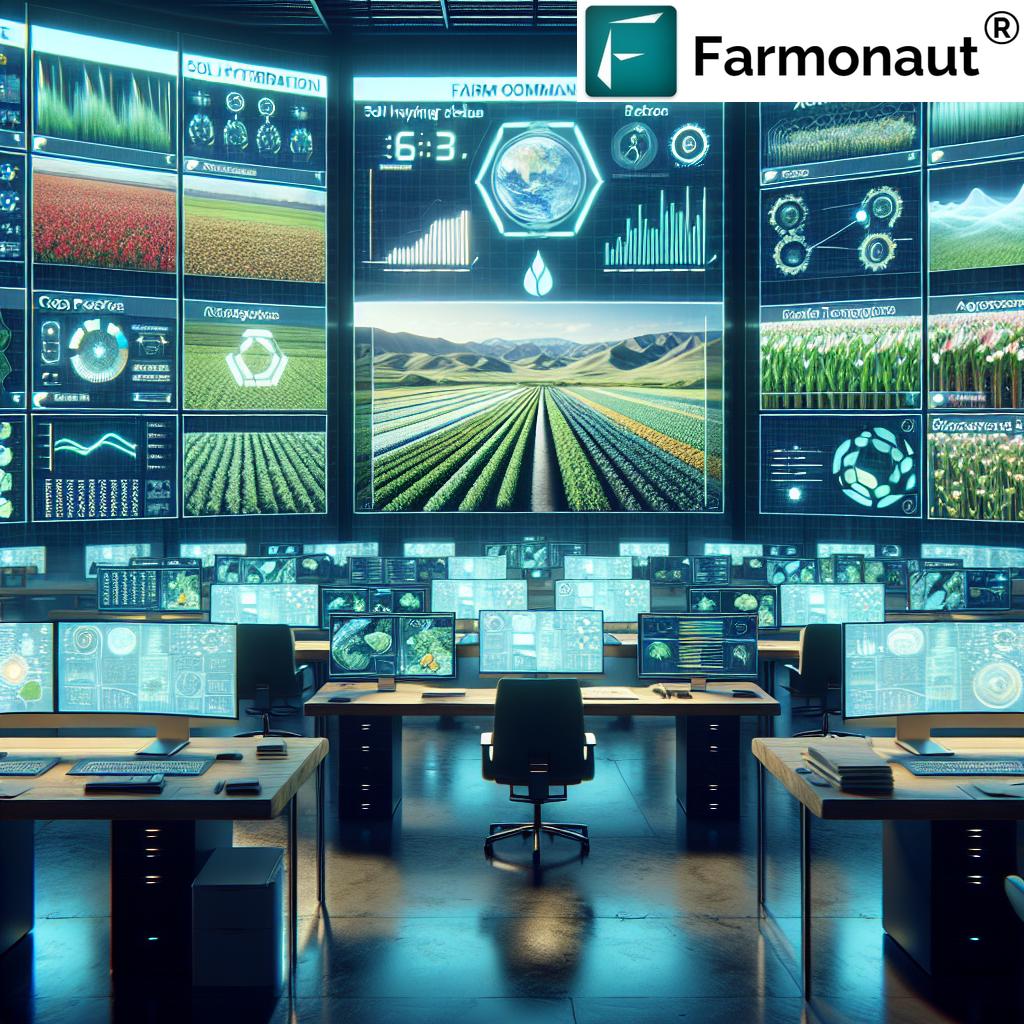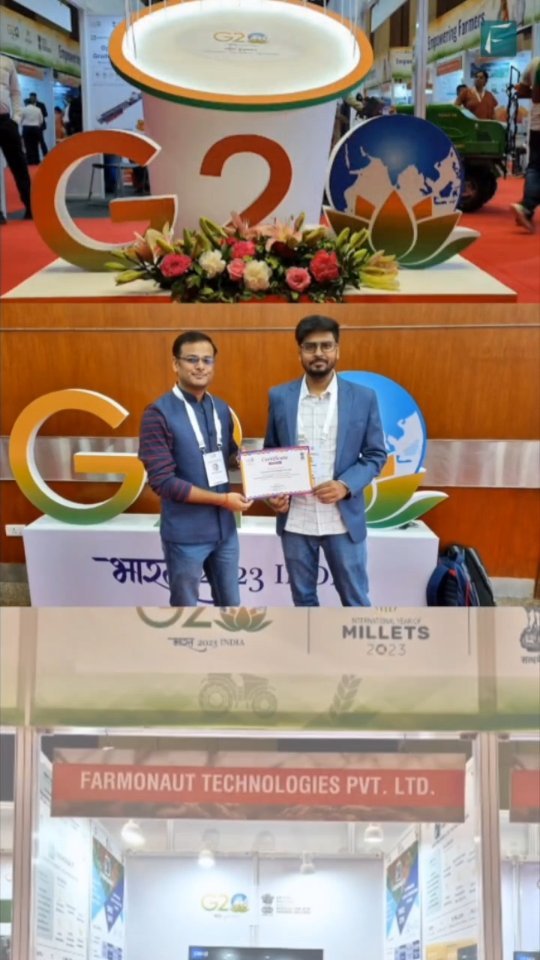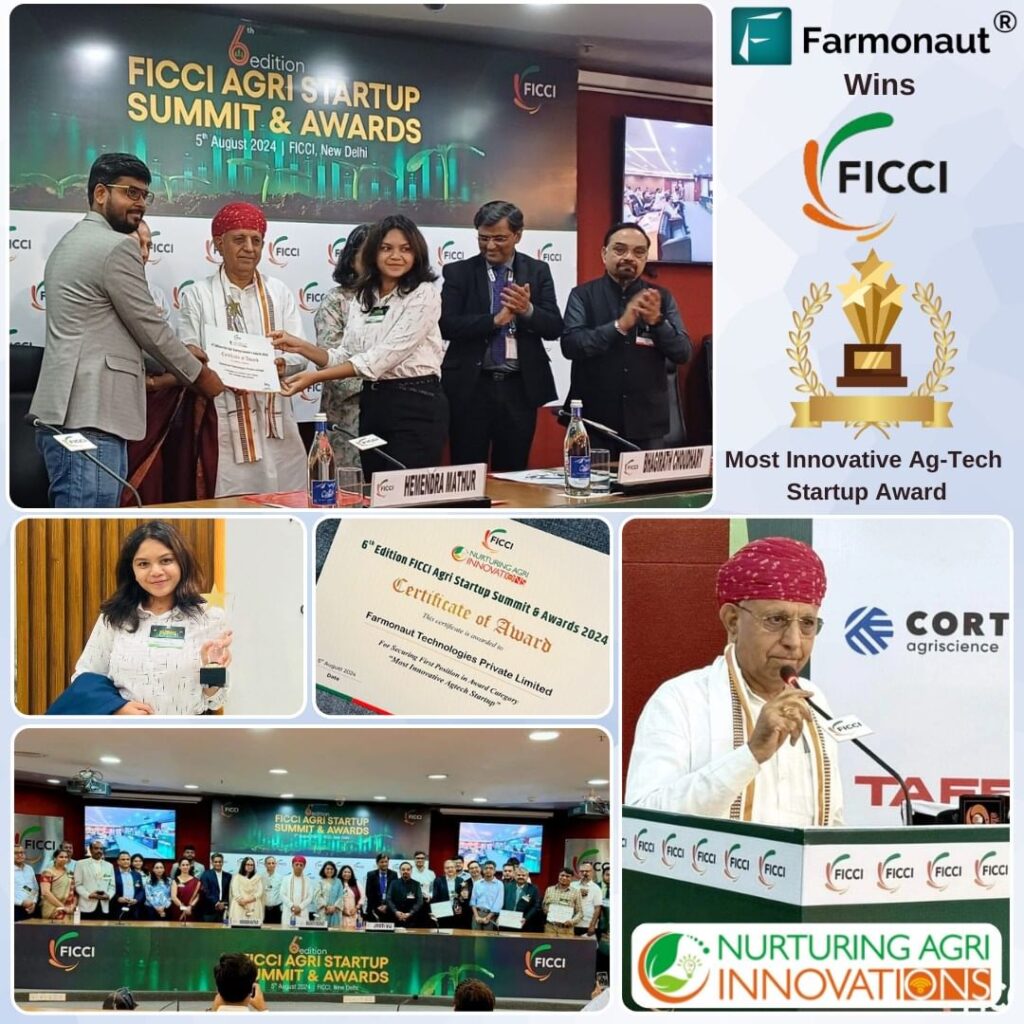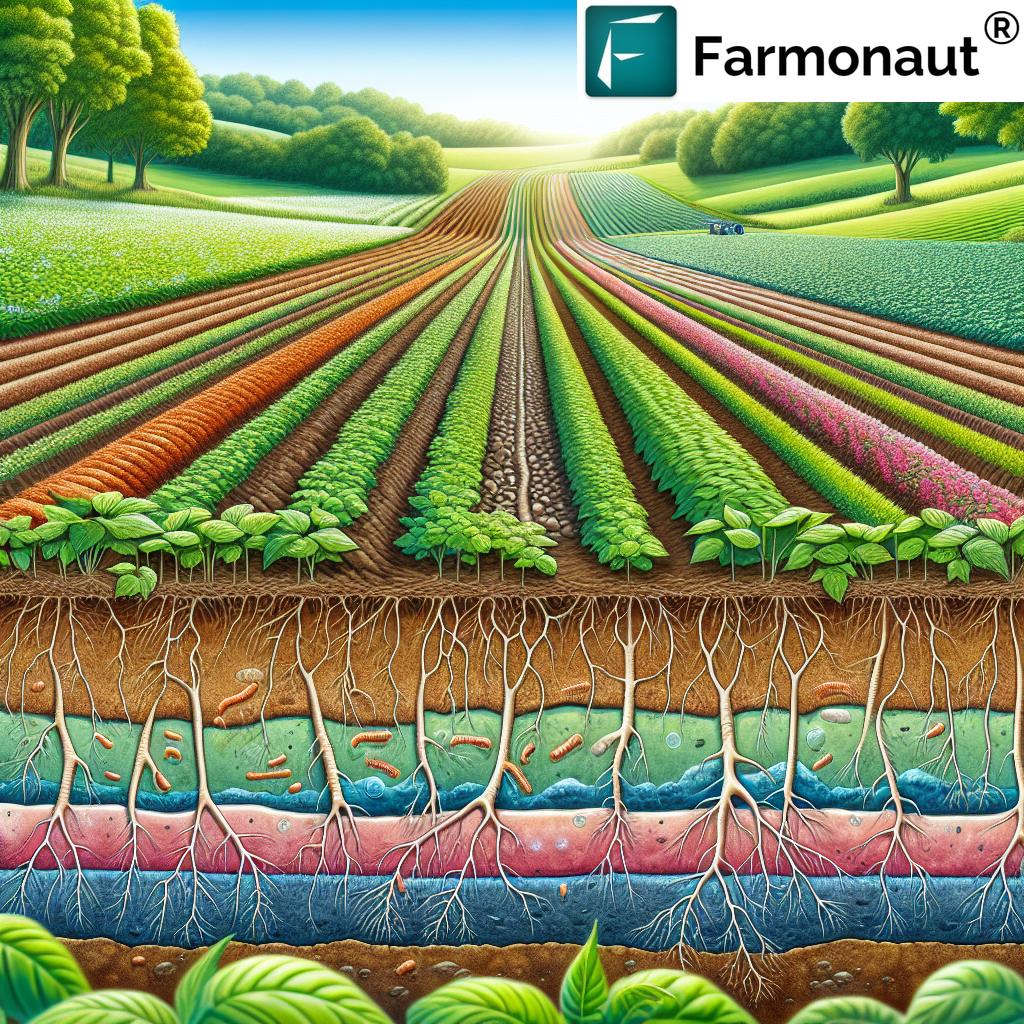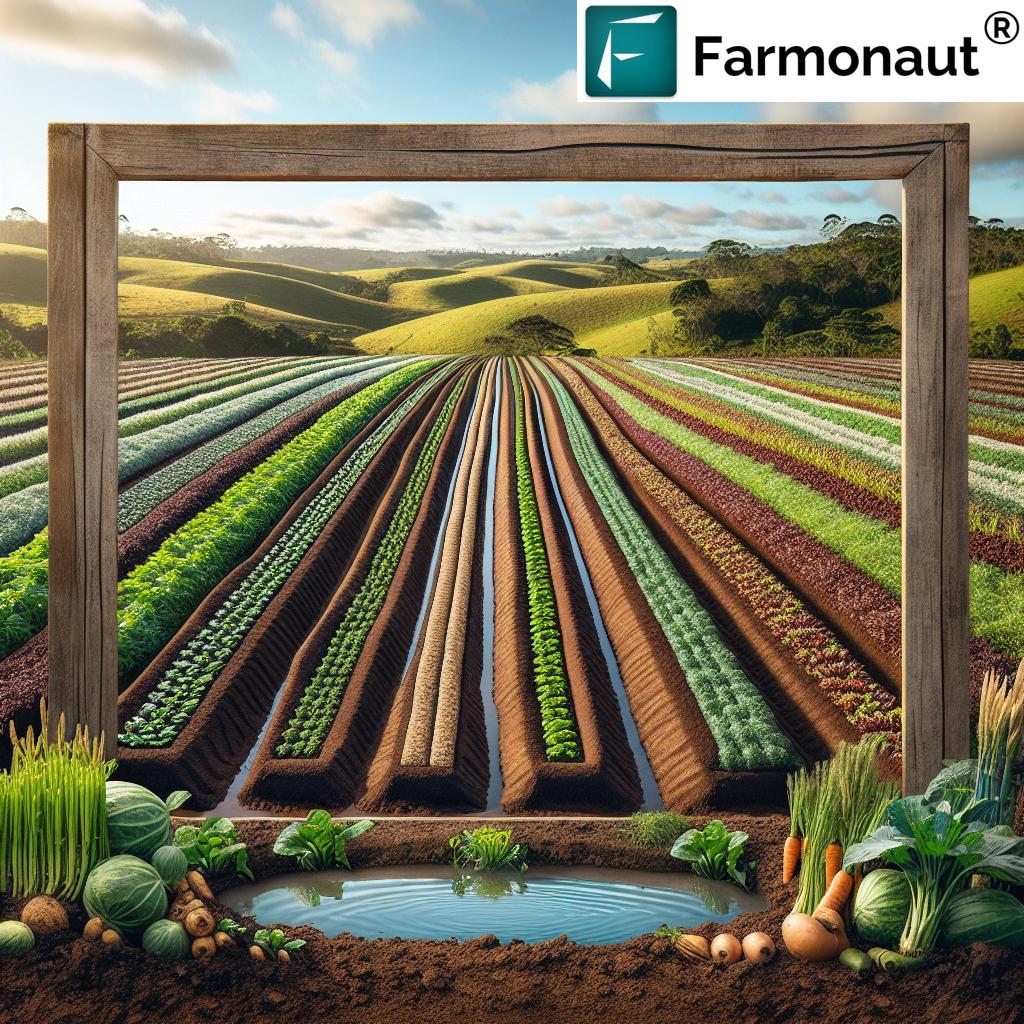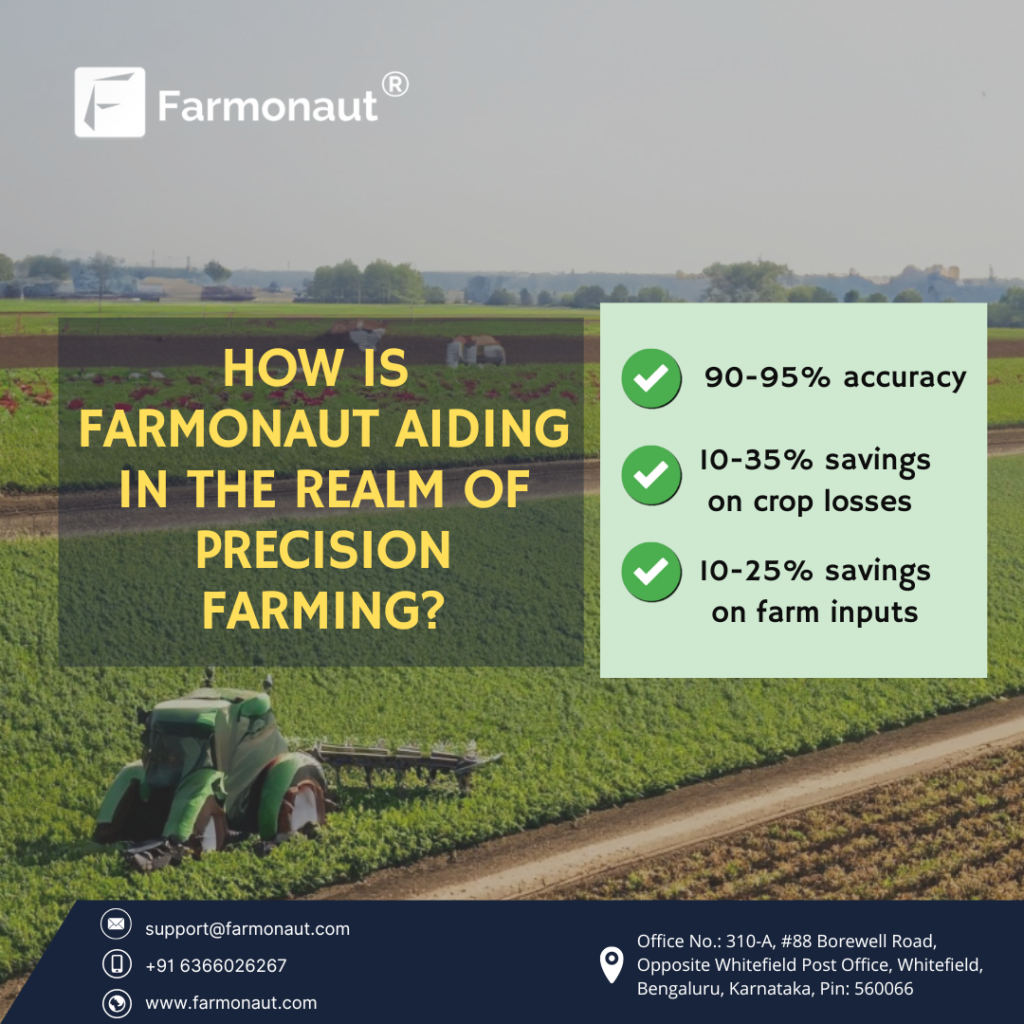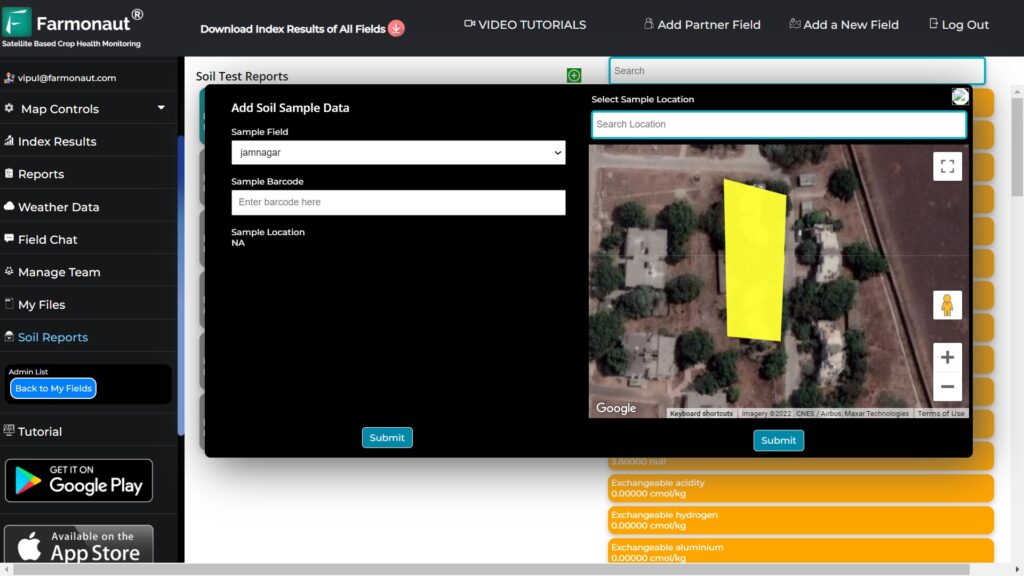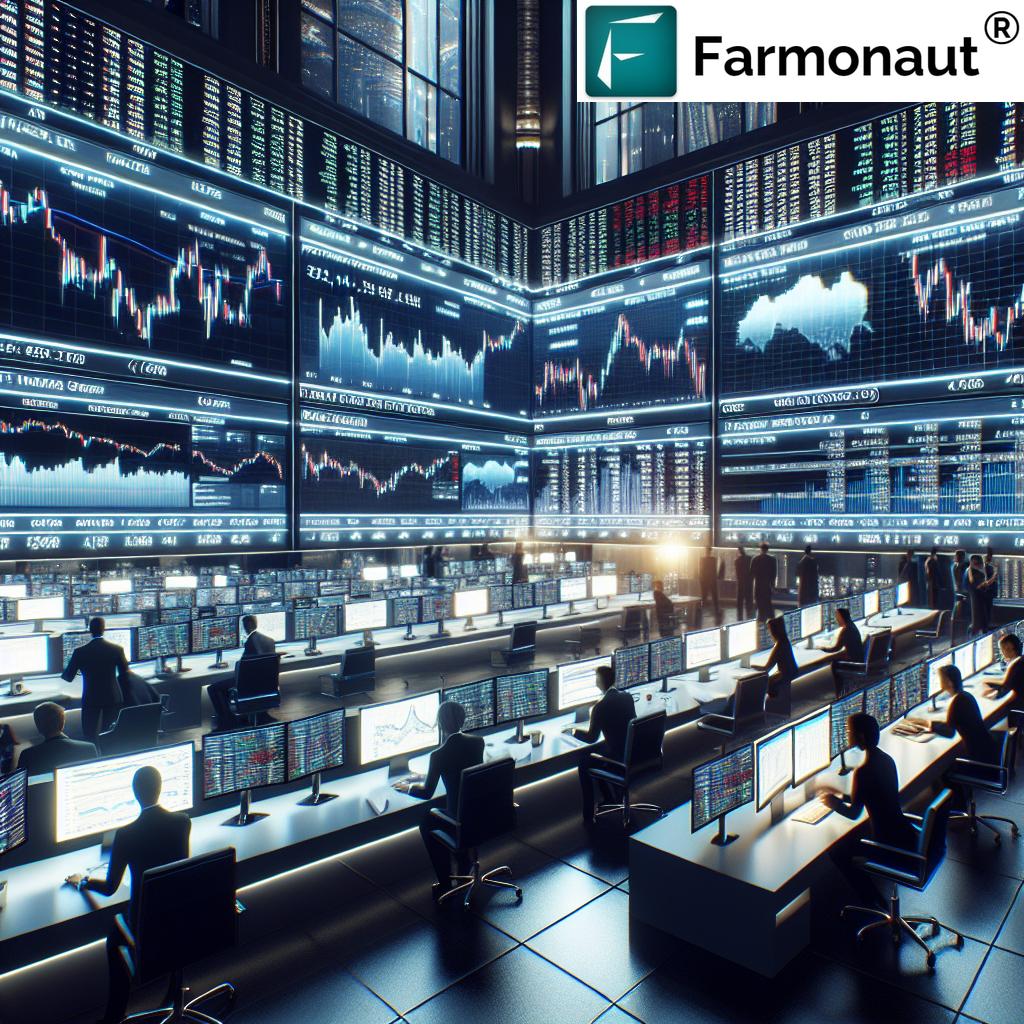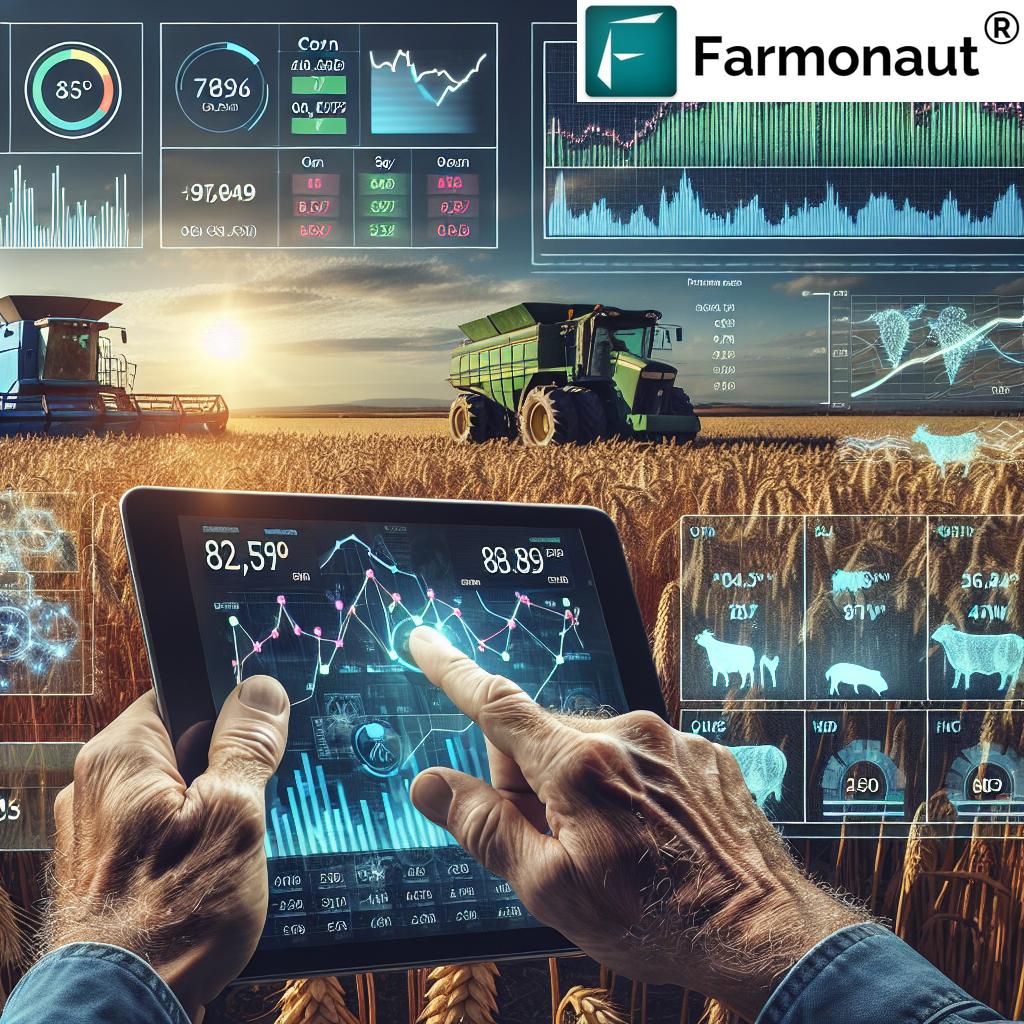7 AI Secrets for Sustainable Food Development Success
Table of Contents
- Introduction: AI’s Role in Sustainable Food Development
- 1. Precision Agriculture with AI
- 2. AI for Pest and Disease Management
- 3. Soil and Water Management with AI
- 4. AI and Robotics in Harvesting and Post-Harvest Operations
- 5. AI-powered Supply Chain Optimization
- 6. AI in Forestry Management
- 7. Challenges in Integrating AI for Sustainable Agriculture
- Farmonaut: Making AI-Based Sustainable Agriculture Accessible
- Comparative Benefit Table: AI Technologies and Their Impact
- Frequently Asked Questions
- Conclusion: The Future of AI in Sustainable Food Systems
“AI-driven soil analysis can increase crop yields by up to 30% while reducing fertilizer use by 20%.”
Introduction: AI’s Role in Sustainable Food Development
As we face increasing pressures from a growing global population, sustainable food development has never been more crucial. Artificial Intelligence (AI) is emerging as a transformative force—revolutionizing agriculture, farming, and forestry by integrating smart systems that boost productivity, optimize resource management, and minimize environmental impact.
By harnessing advanced AI technologies—from real-time soil monitoring and pest detection to supply chain optimization and forest management—we can address core challenges in food production. In this comprehensive guide, we’ll reveal the 7 AI secrets that are paving the way towards a more sustainable and resilient future for food development. Are you ready to discover how data-driven solutions can create a smarter, more efficient, and environmentally responsible agricultural ecosystem?
1. Precision Agriculture with AI: The Backbone of Sustainable Farming
AI in agriculture: Powering Data-Driven Decisions
At the heart of sustainable food development lies precision farming technologies. With AI, we have the capability to analyze huge volumes of data from sensors, satellites, and drones to precisely monitor crop health, soil conditions, and weather patterns. This information enables us to make truly informed decisions on:
- Irrigation: Use of smart irrigation systems that automatically adjust water usage based on real-time soil moisture levels.
- Fertilization: Application of nutrients precisely where and when crops need it, reducing fertilizer waste and environmental runoff.
- Pest and Disease Control: AI-driven routines to forecast, detect, and control pests and diseases before they threaten production.
By using such AI-powered systems, farmers are empowered to conserve precious resources, boost productivity, and reduce negative environmental impacts.
2. AI for Pest and Disease Management: Early Detection for Sustainable Solutions
AI for pest and disease management: Smart Surveillance and Targeted Response
Early detection of pests and diseases is critical to ensuring high-quality, sustainable agriculture. AI algorithms, especially those utilizing machine learning and computer vision, can analyze images from drones or field sensors to identify signs of infestations or illnesses—before they spread.
- Targeted Interventions: Rather than spraying entire fields, AI-powered systems allow for precise treatment applications only where threats are detected.
- Reduced Use of Pesticides: This proactive approach minimizes pesticides usage and the associated environmental contamination.
- Rapid Response: Timely threat detection results in lower crop losses—directly enhancing yields and profitability.
These AI-driven systems are revolutionizing crop management by catching issues at the earliest stage, mitigating both economic and ecological risks.
“Smart AI systems help farmers save up to 50% of water resources in sustainable agriculture practices.”
3. Soil and Water Management with AI: Conserving Vital Resources
Soil and water management with AI: Protecting the Foundation of Food Security
Soil health and responsible water management are central to long-term agricultural sustainability. With AI models capable of processing data from satellites, sensors, and weather patterns, farmers can now:
- Predict Soil Erosion & Salinization: Allowing for preventive measures to sustain soil fertility and structure.
- Implement Smart Irrigation Strategies: Automated smart irrigation systems only deliver water when and where it’s needed, based on real-time soil moisture levels, drastically conserving water and ensuring optimal hydration for crops.
Solutions like Farmonaut’s carbon footprint monitoring tools further add a layer of environmental accountability, enabling users to track and reduce CO₂ emissions for truly sustainable practices.
See how Farmonaut’s fleet management tools optimize machinery use and reduce resource wastage →
4. AI and Robotics in Harvesting and Post-Harvest Operations: Efficiency from Farm to Fork
Autonomous agricultural robots: Reducing Waste and Maximizing Returns
Harvesting and post-harvest processes are traditionally labor-intensive, prone to human error, and responsible for significant food loss. With AI and robotics:
- Autonomous Machines: AI-equipped robots use computer vision and machine learning to identify and harvest only ripe produce, reducing waste and maximizing crop quality.
- Smart Storage Optimization: AI optimizes storage conditions to extend shelf life and reduce spoilage.
- Labor Cost Reduction: Automation minimizes labor demand and ensures operations continue smoothly even during shortages.
5. AI-powered Supply Chain Optimization: From Farm Management to Food on Your Table
AI-powered supply chain optimization: Reducing Waste, Improving Traceability
Inefficiencies in agricultural supply chains often mean crops go to waste, costs increase, and food traceability suffers. By integrating AI:
- Demand Prediction: AI algorithms predict consumer demand, enabling smarter production planning and less overproduction.
- Route Optimization: AI-optimized logistics minimize transportation costs and emissions, streamlining the journey from farm to market.
- Blockchain-Backed Traceability: By combining AI with Farmonaut’s blockchain-based product traceability, every step of the food’s journey becomes transparent, safe, and fraud-resistant.
These innovations offer a new standard of sustainable agriculture solutions: high transparency, resource conservation, and significant cuts in waste.
6. AI in Forestry Management: Safeguarding Ecosystems and Land
AI in forestry management: Monitoring, Preserving, Mitigating Impacts
The forestry sector is a crucial link in our sustainable food and resource web. Using AI systems that analyze satellite imagery and sensor data, we can:
- Monitor Forest Health: Early detection of disease, infestation, or degradation enables timely interventions and helps prevent deforestation.
- Combat Illegal Activities: Detect and report unauthorized logging or land use changes more efficiently.
- Climate Change Mitigation: AI models support carbon sequestration strategies and enable adaptive forest management for a warming planet.
7. Challenges in Integrating AI for Sustainable Agriculture
Navigating Real-World Obstacles in Technology Adoption
- Digital Divide: Many smallholder farmers still lack access to enabling technologies, infrastructure, or digital literacy—the benefits of AI in agriculture must be made equitable.
- Ethical Considerations: Responsible use of data is key—addressing privacy and algorithmic biases prevents unintended reinforcement of inequalities.
- Resource Limitations: Upfront investments in devices, connectivity, and digital tools can be barriers for resource-constrained sectors.
Overcoming these challenges requires commitment from stakeholders to invest in education, accessible platforms, and transparent practices for all in the agricultural value chain.
Farmonaut: Leading the Transformation Towards AI-Powered Sustainability
At Farmonaut, we believe that precision agriculture and sustainable food systems should be accessible—regardless of farm size or geography. Our platform democratizes technology by combining satellite imagery, artificial intelligence, machine learning, and blockchain to deliver smart, data-driven insights through web, Android, and iOS applications, as well as a robust Farmonaut API.
- Satellite-Based Crop Health Monitoring: Instantly view health, soil moisture, vegetation indices (NDVI), and more—supporting real-time, actionable decisions.
- Jeevn AI Advisory System: Delivers personalized, AI-driven farm advice with expert crop management strategies and hyperlocal weather forecasts.
- Blockchain-backed Product Traceability: End-to-end transparency for food safety, compliance, and brand trust.
- Fleet & Resource Management: Optimize machinery, logistics, and reduce operational waste.
- Carbon Footprint Tracking: Monitor, analyze, and reduce your environmental impact effectively.
Whether you’re an individual farmer, agribusiness, or governmental body, Farmonaut’s modular tools make precision agriculture and resource optimization simple, scalable, and affordable.
Interested in seamless integration? Explore our API developer docs
for embedding real-time satellite and weather data in your own systems or applications.
Affordable, Scalable Technology for Every Farm
Our platform operates on flexible subscription models, making it easy for everyone—from smallholders to large enterprises—to benefit from the latest AI in agriculture solutions smartly and cost-effectively.
Comparison Table: How AI Technologies Enhance Sustainable Food Systems
| AI Application | Estimated Resource Savings (%) | Estimated Yield Improvement (%) | Environmental Impact (CO2 Reduction) | Description of Sustainability Impact |
|---|---|---|---|---|
| Soil Analysis | 20% fertilizer, 15% input reduction | +30% | Lower emissions due to reduced chemical use | Optimizes fertilizer application; protects soil; reduces runoff & GHG emissions. |
| Crop Monitoring | 10-15% water/pesticide/fertilizer | +18% | Improved input efficiency, less pollution | Real-time health monitoring enables targeted actions, boosting productivity sustainably. |
| Resource Optimization | 25% operational costs | +20% | Reduced fuel/resource use | Smart systems streamline equipment, labor, and energy allocation. |
| Pest/Disease Detection | 40% pesticide | +12% | Lower contamination/runoff | Early detection and targeted intervention minimize pesticide use and crop loss. |
| Yield Prediction | 10% waste reduction | +14% | Avoids overproduction-related emissions | Improved planning aligns supply with demand; less wastage, more sustainable yields. |
| Water Management | Up to 50% water | +22% | Reduced irrigation emissions | Smart irrigation systems deliver precise hydration, conserving water and energy. |
| Supply Chain Optimization | 18% logistics/fuel cost | Not direct (+7% less spoilage) | Lower transport emissions | AI optimizes routes, reduces spoilage, and builds transparent, trustworthy supply chains. |
Frequently Asked Questions: AI for Sustainable Food Development
By leveraging AI-driven data analysis, sensors, and satellite technology, farmers can optimize resource management, reduce waste, and adopt precise irrigation, fertilization, and pest control measures. This leads to higher yields while conserving soil and water.
No, platforms like Farmonaut make advanced AI technologies affordable and accessible for individual farmers and smallholder operations. Modular subscriptions and mobile/web access empower all farm scales.
AI systems analyze satellite data to monitor forest health, detect illegal activity, and model climate resilience strategies. This is essential for responsible land management and environmental preservation.
Yes. Autonomous agricultural robots and AI-powered post-harvest tech improves sorting, harvesting, and storage, minimizing waste and maximizing product quality from farm to table.
Farmonaut eliminates the need for costly hardware by using satellite imagery and AI-driven software. Subscription tiers, app-based access, and API integration keep costs low for all users. Explore more via our web app.
Conclusion: AI-Powered Sustainability in Food Systems
The future of sustainable food development hinges on our ability to blend the wisdom of traditional farming with the capabilities of artificial intelligence. By embracing AI in agriculture, we are not just optimizing productivity—we are building a resilient, environmentally responsible, and equitable food system.
Platforms like Farmonaut lead the way, proving that advanced AI technologies don’t have to be expensive or exclusive. From soil health monitoring and blockchain-based supply chain transparency, to smart irrigation systems and forestry management, the sustainable agriculture solutions of tomorrow are available—and accessible—today.
By integrating AI into every link of the food value chain, we move closer towards a world where people, planet, and prosperity go hand in hand.



